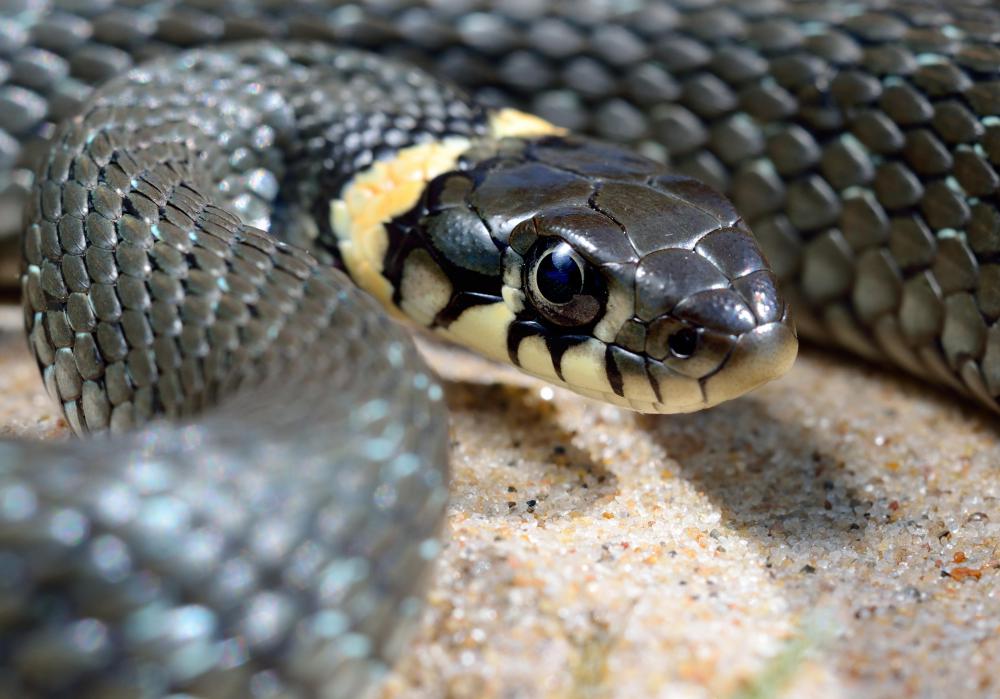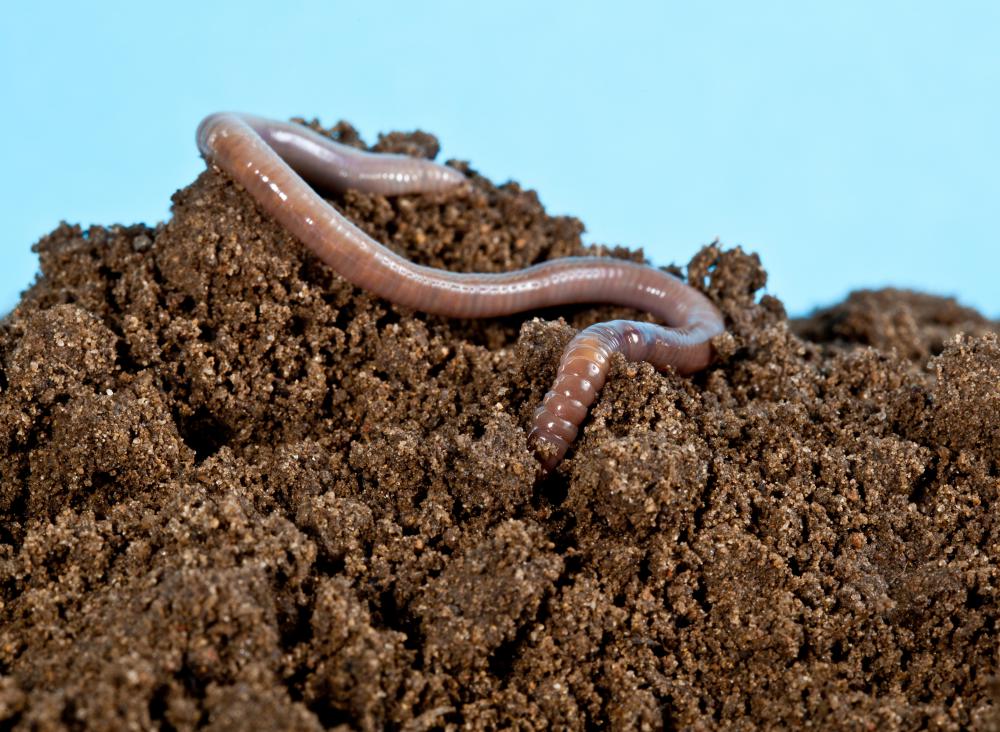At AllThingsNature, we're committed to delivering accurate, trustworthy information. Our expert-authored content is rigorously fact-checked and sourced from credible authorities. Discover how we uphold the highest standards in providing you with reliable knowledge.
What is a Ringneck Snake?
The ringneck snake is a reptile commonly found in North America, including areas of the United States, southeastern Canada, and central Mexico. It is named for the brightly colored ring typically present just below its head. Usually a small animal, reaching sizes of only 10 inches (25 centimeters) to 15 inches (38 centimeters), these snakes are known more for defense mechanisms than for being dangerous. While most varieties of ringneck snake are slightly venomous, none are known to be actively aggressive toward larger threats such as humans or other animals.
The appearance of ringneck snakes is very distinctive. It has smooth scales giving it a shiny or silky appearance. While its back is typically a dark shade, such as black, gray, or brown, it has extremely brightly colored bellies and rings around its necks. This brighter color is usually yellow, red, or orange. The ventral design may be solid or patterned depending on the variety of ringneck snake.

In some cases, the distinctive ring around the snake's neck may be missing or mottled, or the belly color may be slightly varied. These snakes are also occasionally born in albino varieties, in which case the back is colored white, cream, or even pink. An albino ringneck snake typically retains the distinctively bright ventral color, as well as the neck ring.

These snakes are shy, nocturnal creatures that are usually found hiding under leaves or other warm items during the day, and hunting at night. These reptiles are often described as secretive. Ringneck snakes live in colonies, some with a great number of members, others with only a few. Main predators include birds, bullfrogs, and larger snakes.
Ringneck snakes are known to eat smaller snakes, salamanders, earthworms, or even fish. As pets, they can be very picky eaters. If given the chance, they may attempt to eat similar-sized snake. The ringneck snake usually secures its prey by constriction, and then kills it with venom. It then swallows the victim whole.
One of the most interesting defense strategies employed by the ringneck snake is the display of warning colors in an attempt to scare predators off. When startled, ringneck snakes do not usually strike. They wind themselves up and display their bright belly colors to communicate that they are dangerous animals equipped with poison. Like many snakes, they also sometimes expel a potent musk when handled. When encountered in the wild, the best strategy for dealing with these snakes is to simply walk away.
Frequently Asked Questions
What is a Ringneck Snake?
A Ringneck Snake is a small, non-venomous species of snake known for the distinctive yellow or orange ring around its neck. They are found throughout much of the United States, Mexico, and southeastern Canada. These snakes are secretive and prefer moist habitats, often hiding under debris or within crevices.
How can you identify a Ringneck Snake?
Ringneck Snakes are identifiable by their smooth scales, slender bodies, and the unique ring marking on their necks. They typically have dark grey, black, or brown coloration with a bright, contrasting ring. Their bellies are usually yellow or red, with some having a row of black spots down the center.
What do Ringneck Snakes eat?
Ringneck Snakes primarily feed on small invertebrates, including earthworms, slugs, and insects. Juveniles tend to eat soft-bodied prey, while adults can handle a wider variety of invertebrates. Occasionally, they may consume small amphibians or other snakes, showcasing their role as opportunistic feeders in their ecosystem.
Are Ringneck Snakes venomous?
Ringneck Snakes are considered mildly venomous, but their venom is not harmful to humans. They possess rear fangs and a mild venom that they use to subdue their small prey. However, due to their small size and non-aggressive nature, they pose no threat to people.
What is the habitat of a Ringneck Snake?
Ringneck Snakes thrive in a variety of habitats, including forests, grasslands, and rocky hillsides. They prefer moist environments and are often found near streams or wetlands. These snakes are also commonly seen in suburban areas, taking refuge under logs, rocks, or leaf litter.
How do Ringneck Snakes reproduce?
Ringneck Snakes are oviparous, meaning they lay eggs. Mating occurs in the spring, and females lay clutches of 3 to 10 eggs in early summer. The eggs are often deposited in warm, moist areas like rotting logs or rich soil, and hatchlings emerge after a few weeks, fully independent and ready to fend for themselves.
AS FEATURED ON:
AS FEATURED ON:












Discuss this Article
Post your comments